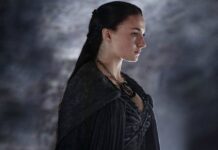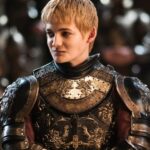Vikings and Game of Thrones have stood out as two beloved action-dramas that hold similarities while very much doing their own thing in terms of style and storytelling.
On the one hand, both rely on historical fiction for the crux of their depth and intrigue. Yet, Vikings adheres more directly to real Medieval history, while Thrones tends to emphasize fantasy with historic influences. Vikings tends to revolve around a single influencial family, where Thrones contains a much larger scope that covers several powerful families.
But which of these overlapping series is more effective in their unique approaches?
10 Vikings: More Realistic
This goes without saying when we’re dealing with a show involving dragons and ice zombies. Yet, going beyond the subject matter – Game of Thrones drifts farther away from realism during its later seasons, during which timelines and travel completely lack continuity or plausibility. We have characters basically teleporting from one end of Westeros to another in weeks or even days.
Vikings conveys a stronger sense of realism by emphasizing the vast time, effort, and drudgery required to traverse the dangerous seas and conquer lands. The long, hard-fought attempted Viking conquest of Francia is a prime example of this.
We see protagonists we’ve gotten to know begin as children and grow into adulthood – sometimes even skipping ahead several years to follow the arcs of characters like Bjorn and Ivar. These elements offer a realistic scope, which helps Vikings feel both epic and relatable in a sense.
9 Game Of Thrones: More Character Perspectives
One area that George R.R. Martin and showrunners Benioff and Weiss excel in is their effectiveness in telling a story that’s vast and epic. This is achieved by the several distinct character narratives the books and show follow from beginning to end. This large array of perspectives allows the viewer to truly grasp the traits of the culture, world-building, and overarching plots throughout.
One minute we get a close look at the cold hostility of the frozen north and The Wall, while the next we get to see Dany acclimating to the culture of the Dothraki in the desert.
While Vikings does contain multiple perspectives, the majority of the time is spent bouncing between the happenings of Ragnar (and later his sons), with the occasional shift to Wessex and the other kingdoms of Great Britain. This more limited form of storytelling can be effective in its own right, though it does feel a bit less interesting and restrictive at times.
8 Vikings: Detail/Authenticity In Makeup And Costumes
Vikings‘ sense of realism extends beyond events and set pieces, and largely translates into the makeup and costumes of the characters.
Not only is the detail of the various wardrobes and makeup impressive in Vikings, but there’s a more realistic sense of fluidity and evolution, as we see nuances like aging and change in facial hair as the years transpire. Everything tends to take on a more organic look. We see characters sporting less hair, marred with battle scars, and adorned with tattoos. With Game of Thrones, characters tend to have similar appearances throughout (even after years have gone by), and often sport some rather extreme outfits to boot.
7 Game Of Thrones: Religion
Sure, Vikings manages to offer some neat religious history and cool mythology when it comes to the Paganism and Christianity. Yet, we don’t really get much in terms of detail or authenticity regarding other religions. The show briefly touches on Eastern ideologies like Buddhism, which takes some creative liberties by inexplicably having Hvitserk flirt with the practice.
Still, GoT superbly melds history with fantasy by introducing several religions, most of which draw influence from a combination of major religions in human history. You’ve got the Faith of the Seven being similar to Catholicism and Christianity. You’ve also got the Old Gods being reminiscent of traditional Paganism, the Ironborn’s Drowned God being based (ironically) on Viking mythology, and the Lord of Light resembling monotheism in a broader sense.
6 Vikings: More Focused Narrative
While GoT‘s method of following various plotlines in all corners of the world can make for an epic, entertaining watch, it can get a bit overwhelming at times. Vikings keeps things focused by mainly honing in on the ambitions of Ragnar, and later, by his sons, his wife, and his brother. Of course, it also touches on rivals of his, both in Scandinavia and abroad, yet ultimately Lothbrok is the primary focus from which most of the key events revolve around.
This can make for a more emotional, relatable, and all-around palatable viewing, vs GoT whose larger scope can feel more disconnected – not to mention convoluted at times.
5 Game Of Thrones: Imaginative Fantasy Elements
A key trait that makes GoT such a draw is its entertaining fantasy elements throughout. With its array of imaginative creatures, wondrous lore, and mystical powers, it really feels like you’re witnessing an epic fantasy book play out – with a far darker tinge, of course.
Granted, part of the show’s impact comes from its fusing of fantasy and more authentic history, but ultimately it’s those awesome dragons and creepy White Walkers that provide the source of much of the action and excitement.
It’s these ominous elements that make the stakes so high and adds such a unique dynamic to this otherwise gritty, restrictive setting of Westeros.
4 Vikings: Authentic Battle Scenes
While there are cases of more engaging, realistic battles in GoT, like Blackwater and Battle of the Bastards, for the most part, Vikings excels when it comes to thrilling, often emotional fights. It mainly does this with its “less is more” approach, and with grittier, more realistic sensibilities which showcase more vulnerable fighters grinding out tough victories.
Particularly in the later seasons, many Thrones action scenes have been criticized for some of the odd and “surface level” battle strategies that a military tactician would be shaking their head over. You’ve also got some inconsistency with the combatants – many of whom seem to have armor made of cardboard – while several main characters are laced with “plot armor,” escaping situations that look like they’d bring certain death.
3 Game Of Thrones: Special Effects
Realism aside, Thrones sure does dazzle with some detailed and epic special effects. Even for a major film, these explosions, massive dragons, and ice zombies would be impressive. But for a TV show, these visuals are simply absurd.
From the huge Wall being collapsed by the dragon spewing blue fire to the luminous Wildfire igniting the ships of Blackwater Bay, there’s no shortage of awe-inspiring visuals to watch, making the experience all the more entertaining. These cinematic qualities are a key component to what makes GoT so captivating for millions of viewers.
2 Vikings: Drawing From Real History And Mythology
There are a number of areas in which Game of Thrones tends to mirror real historical events – much like the Red Wedding drawing influence from the Scottish Black Dinner of 1440. But while Thrones adds majestic fantasy elements over a pseudo-realistic Medieval setting, Viking adheres far more closely to real events and culture of Viking history, mythology, and characters.
Of course, there are still plenty of “creative liberties” taken in terms of characterization, the sequence of events, etc, but Vikings excels in showing a typically more realistic, gritty portrayal of what it was like to be a Northman circa 8th-century Scandinavia. It also follows real historic characters such as Ivar the Boneless, and of course, the legendary Chieftan Ragnar Lothbrok.
1 Game Of Thrones: Depth And Backstories Of Characters
While it’s fun to follow the rise of Ragnar from humble farmer to influential Viking leader, his motivations and overall character tends to feel a touch 2-dimensional at times, as is the case with some of his sons and supporting cast.
With Game of Thrones, we really get a sense of the distinct qualities, traits, and ambitions of many of the people featured. It’s not that Vikings portrays weak or uninteresting characters – far from it. Yet, GoT‘s ability to provide so many rich heroes and villains is just tough to beat. It largely achieves this by emphasizing downtrodden, flawed, or otherwise marred antiheroes, along with its moral “grey area” which adds both depth and relatability on many levels.




















![[Book Review] The Blade Itself (The First Law Trilogy) by Joe Abercrombie](https://bendthekneegot.com/wp-content/uploads/2018/01/1516047103_maxresdefault-218x150.jpg)
















